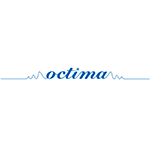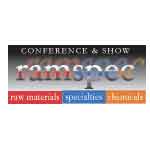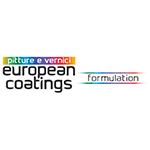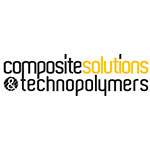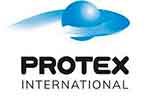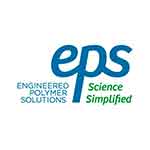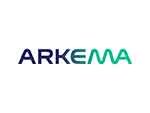
- Home
- Eventi
- 31 Gennaio 2024 – Milano
- 19 Settembre 2023 – Milano c/o Palazzo FAST
- 20 Aprile 2022 – 5° Webinar:
- 20 Gennaio 2022 – 4° Webinar:
- 23 Giugno 2021 – 3° Webinar:
- 11 Marzo 2021 – 2° Webinar: Presentazioni e Registrazioni
- 11 Novembre 2020 – 1° Webinar:
- 29 Marzo 2017 – Compotec CarraraFiere
- “Ramspec” 2016 – Salone Prodotto Chimico – Milano Seconda Edizione
- 7 Aprile 2016 – Compotec CarraraFiere
- 25 Giugno 2015 – Milano Palazzo Bovara
- 25 Marzo 2015 – Milano Palazzo Fast
- Ramspec 2014 – Modena 2-4 Ottobre
- Made Expo 2012 – Milano 18 Ottobre
- Made Expo 2011 – Milano 7 Ottobre
- Compositi Expo Congress 2010 – Modena 13/14 Ottobre
- Compositi Expo Congress 2009 – Modena 14/15 Ottobre
- Prossime Iniziative
- Contatti


20 Gennaio 2022 – 4° Webinar:
Thioplast™ polysulfides – Resistive polymers for high-performance coatings and adhesives
Relatore: Christian Probst/NOURYON
Abstract: Thioplast Polysulfides from Nouryon are uniquely chemically resistive, flexible and gas-tight liquid polymer resins. The engineered solution became an essential resin for sealants, adhesive and coatings in the aerospace and building and construction industry. The newly designed epoxy-terminated polysulfide Thioplast EPS35 is particularly suitable for epoxy-based adhesives and coatings and improves their adhesion, flexibility, resistivity and toughness.
Polymeric flow and levelling agents for waterborne coatings formulations
Relatore: Xavier Franc e Marco Torre/PROTEX INTERNATIONAL
Abstract: Whether it is about decorative paints or industrial coatings, waterborne finishes need to achieve a perfect surface appearance and optimal mechanical properties. During the drying of waterborne coatings, some irregularities or textures can develop on the surface, resulting in coating defects such as craters, orange-peel, pinholes and de-wetting effects. Perfect flow, levelling and substrate wetting are the key to achieving perfect surface appearance. These properties are directly related to control of the surface tension at both the liquid-air and liquid-substrate interfaces. Avoiding negative side-effects such as loss of inter-coat adhesion and stabilization of foam is also an important goal. A new series of VOC-free surfactant-like polymeric additives combining flow, levelling and substrate wetting are a significant help for the paint formulator.
Valida: Natural cellulose as source of inspiration in waterborne coatings formulations.
Relatori: Gabriel Ferrante/SAPPI EUROPE
Abstract: Cellulose is the most abundant organic polymer on Earth and the main component of all plants. It makes sense to harness this resource and unlock its potential as a biomaterial. One development centered around this is Valida which is fibrillated cellulose manufactured by Sappi, a 100% natural, biodegradable and sustainable material produced by mechanically processing wood derived cellulose fibres down to their smallest components, resulting in innovative material properties. These properties include excellent stabilizing potential, rheology modification and robustness. Valida’s unique rheology profile – high viscosity at rest, highly shear thinning and sprayable – make it a suitable material for many applications, including waterborne Paints and Coatings systems.
Innovative hybrid polymers for sustainable renovation and construction
Relatore: Steven Vandebril/KANEKA
Abstract: In the scope of the European Green Deal, Kaneka strives to offer future proof and sustainable solutions for the hybrid sealant and adhesive industry. As buildings are one of the largest sources of energy consumption, sealing and bonding has never been more important to pursue the ambition of energy gains and economic growth. Kaneka offers a wide range of solutions for the construction industry, making the life of architects, builders and craftsmen easier.
Durable Architectural Top-Coat: Environmentally Friendly Waterborne Fluorinated Resins for High Performance
Relatore: Simon Petz/DAIKIN CHEMICALS
Abstract: Following the trend of elevated care for the environment Daikin Chemical keeps expanding its portfolio of fluorinated resins which find numerous application in the Building & Construction market. In our contribution a novel waterborne grade is compared to its solventborne analogue for high duty applications. Non-fluorinated polyurethane coatings were taken as a reference. While the accelerated weatherability and versatile cleanability tests pose a real challenge for top coats, formulations with the new waterborne resin reach the same level of performance as classical fluorinated high duty coatings. Therefore, the former could be used to formulate a next generation of “green” top coats for highly demanding environments.
3M Glass Bubbles: a lightweight filler for thermal insulating plasters and dry mortars.
Relatore: Giuseppe Sterlicchio/3M ITALIA
Improved energy efficiency – binders for cool roof coatings
Relatore: Nico Sgrolli/EPS MATERIALS
Abstract: Avoid common coating failures, improve energy efficiency and sustainability in building and construction. Cool roof coatings minimize surface temperatures and protect the roof surface. But common issues like asphalt oil migration or dirt pick up can compromise coating solar reflectance.
In masonry efflorescence and adhesion issues can compromise the color retention and durability. EPS has developed several 1K Acrylic polymers to avoid these common issues, extending service life and durability for different applications from cool roofing to masonry.
Worléè Cure VP 2285, the amine curing agent with accelerating effect for dissipative floor coatings.
Relatore: Nicole Ahlgrimm/WORLÉE
Abstract: WorléeCure VP 2285 the amine hardener with booster function. WorléeCure VP 2285 is an aqueous polymeric hardener with accelerating effect in the system. This hardener is compatible with both liquid resins and solid resin dispersions. The product can serve a wide range of applications. These include primers, sealers and conductive coatings.
Achieving sustainability by utilizing migratory corrosion inhibitor technology.
Relatore: Ivana Liposcak/CORTEC
Abstract: The request for long-term concrete structures without premature need for maintenance and repairs is growing rapidly all over the world. Clients have asked for structures like bridges to be designed to satisfy a specified service life, usually around 100 years. This surpasses the design life of traditionally used codes and standards. Usually, the durability is ensured by adopting rules and standards such as Eurocode, AASHTO LRDF, BS, or DIN. Engineers, contractors, and owners had to learn more about the fact that environmental impacts are irreversible and they worsen with time. This happens, for example, because of the accumulation of chloride ions in concrete exposed to salts or sea water. Corrosion in concrete is a problem. How to approach durability design? How to Build and Maintain Durable Structures? Patented MCI® Technology was designed to protect reinforcing metal in
concrete from corrosion and is widely used around the globe. Case studies – A Powerful Dose of Migrating Corrosion Inhibitors World’s First Biobased Corrosion Inhibiting Admixture for Concrete
Receives CE Certificate
Novel solutions for sustainable and durable coatings systems
Relatore: Jonas Berg/EVONIK
Abstract: The presentation will showcase solutions to make coating systems more durable as well as more sustainable. It will be shown how SPHERILEX®, a silica with a spherical particle morphology, can be used to improve mechanical resistance in wall paints and increase their lifetime.
In the second part, due to the increasing global demand for bio-based products, a defoamer based on renewable raw materials will be introduced. It is shown that sustainable defoamers are good performing defoamers without compromising.
Highlights on rheology and specialty additives for construction and building materials such as adhesives, sealants, plasters and renders
Relatore: Yohann Trang/ARKEMA
Abstract: Rheology additives are playing a significant role in the formulation of many materials in the building industry such as plasters, renders, sealants, adhesives, putties and coatings. Selecting the right solution will allow to enhance key performance of the final product in terms of storage stability, application, appearance and weathering. Arkema, as a leader in sustainable materials, has always focused on developing and supplying high performance and eco-friendly products. Following a quick glance on Arkema’s portfolio of specialty additives, three of our latest innovations for sealants, tile adhesives and putties will be highlighted.
